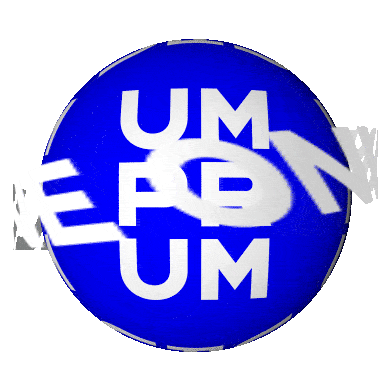


Jakob Johannes Dostert: Fascination with colours in space
Jakob Johannes Dostert a recent graduate of UMPRUM from Germany, successfully completed the English-language Visual Arts MA programme in the Architecture III Studio under the leadership of Prof. Imrich Vaško. During his studies, his interest in colours in architecture, their perception, and their influence on people deepened.
In the first semester of my MA studies at UMPRUM, I worked with Sophia Tligui on a kind of bee temple, a place where interaction between humans and bees can take place. In the project, we were looking at the perception of colour in bees and we found that bees don't perceive red light, so a room in red light appears dark to bees. We made use of this fact in our project by filtering out the red light with foils in yellow and magenta colours using subtractive colour mixing. This created a space that appears red to humans, while the bees perceive it as dark. This allows people to approach the bees without disturbing them, providing opportunities for further activities and interactions. This principle of mixing colours by overlapping coloured foils aroused a fascination in me, so I explored it in other projects during my studies, and therefore it seemed logical to work with this principle in my latest project at UMPRUM.

My diploma project, CMY Pavilion, also deals with subtractive colour mixing. It consists of a system of triangular modules that span a linear surface with arches. These arcs are connected with pressure rods and tension ropes, through which strips of coloured foil are woven. The arch modules, which form a three-layer system can be axially displaced. The inner layer is interwoven with yellow stripes, the middle with magenta, and the outer layer is cyan. This way, the colours red, green, and blue can be created by superimposing the colours cyan, magenta, and yellow. The pavilion is integrated into the concept of an existing school as an extension and is intended to facilitate a variety of uses and activities. Each of the six possible colours is assigned attributes that support the respective activities. In this way, the modules can be moved for different activities to create the desired mood and atmosphere for the respective activity.
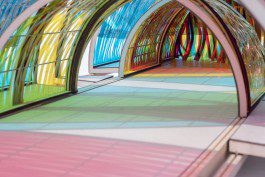
What do you like about UMPRUM?
At UMPRUM, I definitely appreciate the people. It has always been very inspiring for me to come into contact with so many talented people from different fields. Especially in the Visual Arts program, people come from different countries and cultures from all over the world, which is especially exciting. And of course, the old venerable building with its many workshops is breathtaking.
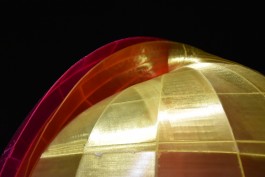
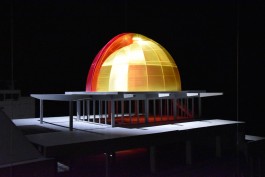
How is UMPRUM different from your previous school?
Having previously studied at a university of applied sciences, UMPRUM is of course very different. My previous university was certainly more technical and probably more conventional, whereas UMPRUM and especially the Architecture III Studio are more free and experimental in their approach, which is certainly evident when you compare my previous work with my projects at UMPRUM.

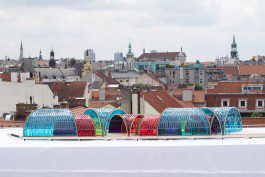

Before coming to Prague, Jakob Johannes Dostert completed his bachelor's degree at the Münster School of Architecture in Germany. Here he worked in an architectural studio on several projects that were realized. The theme he has been working on for a long time is the connection between architecture and nature. In this context, he discovered natural coloured light as a medium. He completed his Master's degree in the Architecture III Studio at UMPRUM in 2022.
The article was created as part of the project Priorities of the Czech Presidency, supported by the Centralized Development Projects of the Ministry of Education and Culture of the Czech Republic.